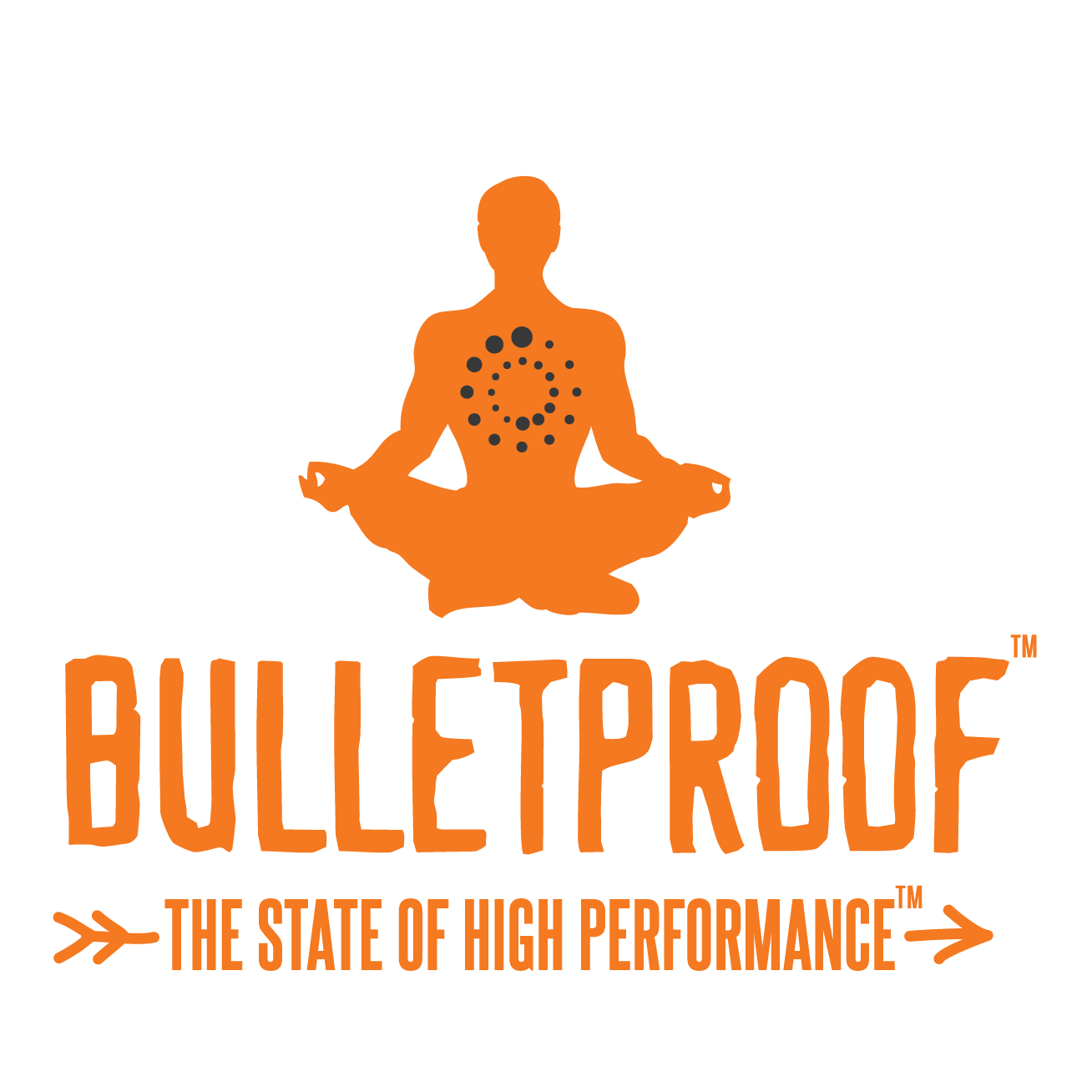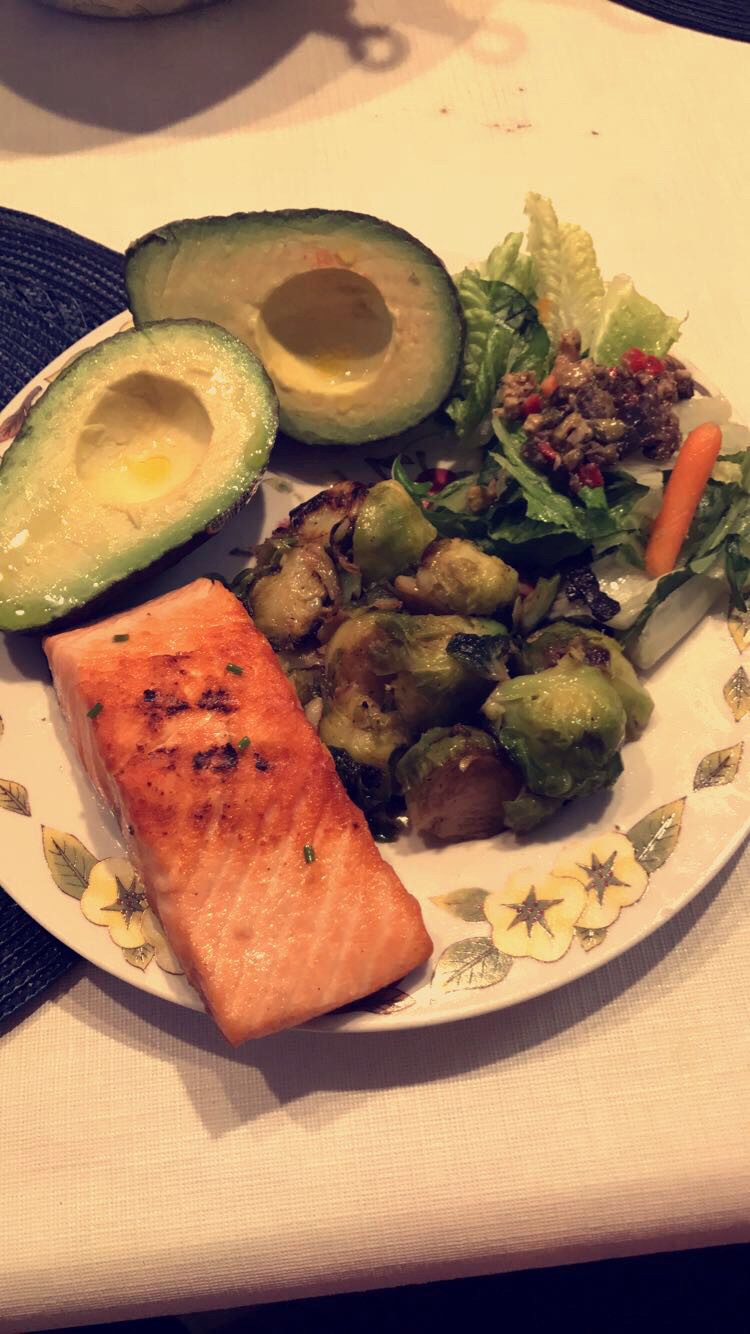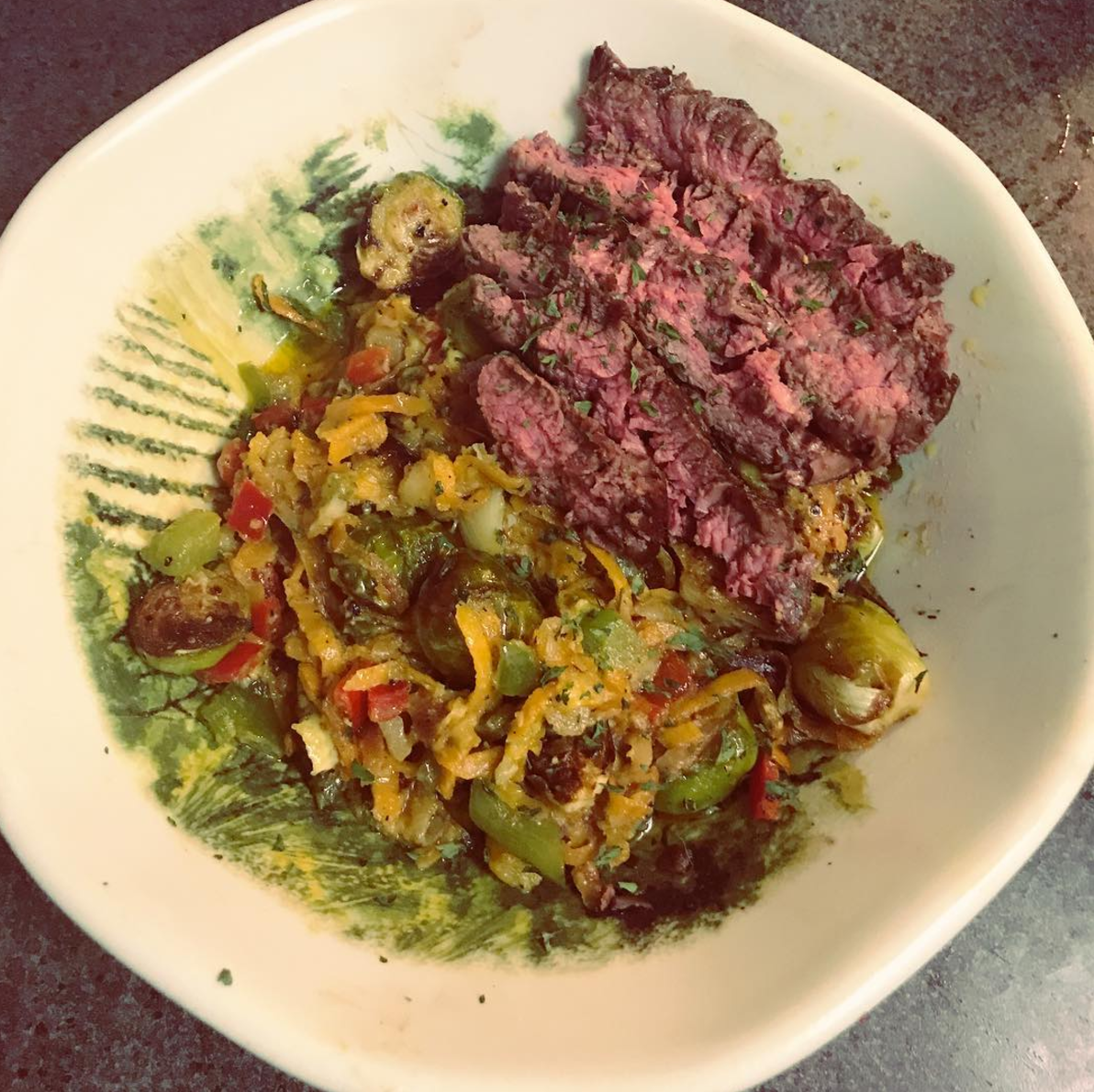You?re reading this because you want to lose weight or not want to feel like a piece of shit all day. Whether it?s 5 lbs, 50 lbs or even 100 lbs I have a solution to help you.
Please keep in mind that I?m not an expert at all. I?ve never been properly educated on health, fitness or nutrition.
I?m just a college kid who read some books and lost over 50 lbs within a month and completely changed my physique and life, all without much effort.
In fact, the way I lost weight was very enjoyable and I felt great 24/7. I learned some fundamentals about the human body and how to cook up some meals as well.
The basis for this article is that it?s not hard to lose weight AT ALL if you have the right information and tools.
Yet, despite being in the age of information many people are misinformed about the human body.
I?m talking about those people that work out everyday and eat half a piece of celery in the morning, and are dying from exhaustion and wonder why they see no long term changes.
Even if you don?t want to lose weight doing this diet will improve your overall mental and physical condition.
I remember thinking to myself once I was two weeks in the diet ?wow it feels like for the first time in my life my brain is working correctly.?

My high energy levels were conducive to my level of work at that time. I was in the middle of launching a VR Startup, VU Dream and I was working up to 80 hours a week.
I?m here to help out whoever has the capacity to read this article. Here are some basic fundamentals about this diet before we begin.
This diet?s basis is Dave Asprey?s Bulletproof Diet.

- No Calorie Counting or Cutting.
- Exercise is very good for your health but not necessary for weight loss.
- More energy
- Better focus and concentration
- Fat loss
- Muscle gain
- Better mood
- Increase in overall happiness
- No more food cravings
- Better sexual performance
Step 1. Fundamentals and Guidelines
Understand basic nutrition and how your body works. So many people follow certain diets with no logical basis or reasoning. You need to learn how to listen to your body.
If you don?t feel well after eating a certain food that should mean something to you. Itching, increase in body temperature, lethargy are all signs that your body is telling you that it doesn?t like whatever you did.
Nutrient dense foods are often sacrificed when people restrict calories. Things like grass-fed butter, fatty pasture raised meat, and organs have highest nutrient content of any food.
They?re also high in calories, which is why misinformed calorie-fearing people avoid them. Without proper nutrients, your body won?t efficiently burn fat or build muscle. Eat nutrient dense foods and ignore the calories. It?s food quality and composition that matter, not volume.
It?s 2017 and by now you should move past the tales of blasphemy that say fat is bad for you.

Your body has two main fuels: glucose (sugar) or fat.
The preferred source of fuel is fat, but under certain circumstances, we can shift the body to using more sugar rather than fat. At times, such as being chased by a rabid dog, this is a good thing. However, it?s not a good thing if sugar remains the main fuel for most of the day. Relying on sugar means you?re not burning fat.
The only way you can lose fat is if you use fat. You?ll be unsuccessful at losing fat if you don?t burn fat, even if you eat fewer calories and burn more through exercise. You can lose weight, but most of the loss will come from lean body mass, or muscle tissue, not fat.
Eating a high fat diet teaches your body to burn fat instead of sugar. It also keeps you satisfied which prevents cravings. Make sure you?re eating high quality fats ? not vegetable oils or peanut butter.
Saturated fat like coconut oil and grass-fed butter will not cause hardened arteries; they help your brain and body perform and look better. Fats are needed for the formation of sex hormones like testosterone and human growth hormone.
A high fat diet prevents blood sugar swings and low energy. When in doubt ? eat more fat. I eat 60?70% of my calories from fat, and often have a meal that is only fat, which keeps my metabolism ready to burn fat for fuel.
That being said EAT A LOT OF FAT. Not all fats are created equally however and you need to be sure you are getting plenty of nutrient dense foods like vegetables as well.
(Full list of foods you should be eating below)
All this being said, if I mentioned something in this article and it doesn?t work well for you, give it a week and if no positive results arise then stop. Everyone?s body is different. Try new things.
10 Guidelines for the Bulletproof Diet
- Eliminate sugar AND alcohol. Sugar comes in many hidden forms, including fruit juice, sports drinks ? even sauces and salad dressings. Even naturally-derived sweeteners like honey, maple syrup, and agave can mess with your blood sugar and make you fat.
- Replace sugar with the right fats. Replacing sweeteners with healthy fats like grass-fed butter, ghee, Brain Octane Oil, XCT Oil, cocoa butter, and coconut oil reduces cravings and gives you more energy. Avoid bad fats like corn, soy, and canola oil and unstable polyunsaturated fats like walnut, flax, and peanut oil.
- Switch to grass-fed meat and wild caught seafood. The quality of your food matters. Choose pastured, grass-fed meat like beef, lamb, and bison. Pastured eggs, pork, chicken, turkey, and duck also make good clean sources of protein. Eat significant amounts of fish and other seafood, but make sure your fish is wild ? never farmed!
- Remove grains and gluten. Wheat is a particularly important grain to avoid because of the many negative effects of gluten, a protein found in wheat and other grains. But this category also includes corn, oats, barley, and other cereal grains.
- Eliminate all synthetic additives, colorings, and flavorings. This includes aspartame, MSG, dyes, and artificial flavorings.
- Eliminate legumes such as peanuts, beans, and lentils. If you must have beans, soak, sprout (or ferment), and cook them yourself.
- Remove all processed, homogenized, and pasteurized dairy. Most dairy products contain casein and lactose, two compounds that cause inflammation and digestive distress in many people. Grass-fed butter has much lower levels of casein and lactose because of the churning process, which removes the buttermilk from the butterfat. Most people feel a lot better removing milk, cheese, and other dairy products entirely, but if you want to keep some dairy products, opt for full-fat, raw dairy from grass-fed cows.
- Switch to organic fruits and vegetables. This is more important for some plants than others. You can find a full updated list from the Environmental Working Group.
- Cook your food gently, if at all. Smoking, frying, and grilling can damage the proteins in your meat and produce carcinogens that adhere to the surface. Best to cook your food slow and low, at or under about 320F. Do not use microwaves or fry your food.
- Limit fruit consumption to 1?2 servings per day. Fruits are not vegetables. Favor low fructose-containing fruits like berries and lemons over higher sugar fruits like watermelon and apples.
Bonus tip: Enjoy your food.
Step 2. Drink Butter Coffee in the Morning and Fast until Lunch Time
WHAATTTTT
Yes I know. Trust me on this one. Just be sure to get Kerrygold Grass-fed unsalted butter. Most supermarkets carry them and are not expensive at all. Here?s a video below that explains the process.
I can?t vouch for Asprey?s claims about the coffee and MCT oil and mycotoxins but for this purpose you can use any coffee and any brand MCT oil is fine.
Intermittent Fasting
Intermittent fasting has become popular in biohacker circles because it shows tremendous promise for fat loss, preventing cancer, building muscle, and increasing resilience.
The basic idea behind plain intermittent fasting is to eat all of your daily food in a shortened period and fast the rest of the time. This process tells your body to simultaneously build muscle and burn fat.
The problem is not everyone does well with fasting. If you?re a busy entrepreneur or even a student who needs to be in a high performance state all day, dealing with hunger can be a distraction.
Welcome to?.Bulletproof Intermittent Fasting!
1. mTOR
mTOR is a major mechanism that increases protein synthesis in your muscles. Both exercise and coffee raise cellular energy use while simultaneously inhibiting your muscle building mechanisms (mTOR) for a brief period, which causes it to ?spring back? and build even more muscle as soon as you eat.
There are 3 known ways to raise mTOR. Intermittent fasting, exercise, and coffee (or more weakly, chocolate, green tea, turmeric, or resveratrol)
Plain intermittent fasting doesn?t use coffee, so it only hits one, or possibly 2 of the 3 possible mTOR triggers. Bulletproof Intermittent Fasting works better because it can use all 3 mechanisms, but it works very well (as you can see) with just coffee and intermittent fasting. The cool thing is that an all fat breakfast doesn?t make your body think it?s broken the fast, so you get the benefits of the fasting anyway. It?s awesome!
2. Ketosis
Plain intermittent fasting helps you enter ketosis (fat burning mode that?s good for your brain) but then you end ketosis if you eat carb-containing foods at the end of the fast.
Using MCT in your Bulletproof Coffee increases the speed at which you go into ketosis, so it fuels your brain, and it helps you stay in ketosis even in the presence of some carbs in your diet. MCT is noticeably better than just grass fed butter in my coffee for this effect.
Here is what your Dieting Schedule should Look like in a given day

Step 3. Learn to Eat Properly
Here is a full list of the BEST possible foods you should be eating everyday. Broken down into calories and the amount of servings.
Vegetables (6?11 Servings a Day!)
- Bok Choy
- Brussel Sprouts
- Fennel
- Celery
- Asparagus
- Broccoli
- Cauliflower
- Avocado
- Cucumber
- Cilantro
- Kale
- Collards
- Spinach
- Cabbage
- Radishes
- Zucchini
- Lettuce
- Summer/Winter/Butternut Squash
- Artichokes
- Green Beans
- Carrots
- Leeks
- Green Onion
- Parsley
- Onion
- Shallots
- Eggplant
- Peppers
- Tomatoes
- Peas
Nuts & Legumes (2?3 Servings)
- Coconut
- Olives
- Almonds
- Cashews
- Hazelnuts
- Macadamia
- Pecans
- Walnuts
- Chestnuts
Dairy (2?3 Servings)
- Organic Grass Fed Butter or Ghee
- Organic Grass Fed Cream
- Organic Grass Fed Full Fat Raw Milk or Yogurt
Protein (4?6 Servings)
- Grass Fed Beef
- Grass Fed Lamb
- Pastured Eggs
- Low-mercury Wild Fish (Anchovies, Haddock, Petrale Sole, Sardines, Sockeye Salmon, Summer Flounder, Trout)
- Wild Caught Seafood
- Pastured Pork
- Pastured Duck and Goose
Starch (choose either 1 serving of Starch or Fruit at Night)
- Sweet Potato
- Yam
- Pumpkin
- Butternut Squash
- White Rice
- Taro
- Cassava
- Plantain
Fruit (choose either 1 serving of Starch or Fruit at Night)
- Blackberries
- Cranberries
- Raspberry
- Strawberry
- Blueberries
- Pineapple
- Tangerine
- Grapefruit
- Pomegranate
There is NO Calorie counting with this diet. Simply, eat until you are satisfied and full. Your #1 food group should be vegetables because they are some of the most nutrient dense foods.
I like to make my meals with a piece of Protein, a side fat like avocado or nuts, and 2 different vegetables.
Here are some examples of some of the things I?ve cooked.


Step 4. Cooking Methods (it?s not hard)
Unless you want to spend copious amount of money and live in an urban city it?s almost impossible to be bulletproof and eat out for all your meals.
You?re going to need to learn how to cook on a very basic level. Believe it or not it is actually ridiculously simple to cook 5 star meals in your home.
I?m not here to give you a full tutorial on how to start cooking. For the purpose of this article I?m going to highlight what you should and shouldn?t do when cooking in the kitchen.
If you take the healthiest foods on the planet and throw them in a fryer?game over.
- When smoking, frying, or grilling meat, two carcinogens are produced: heterocyclic amines (HCAs) and polycyclic aromatic hydrocarbons (PAHs). HCAs are formed when amino acids, sugars, and creatine react at high temperatures. PAHs are formed when the fat and juices from meat are burned in the flames of an open fire (such as when grilling) and then adhere to the surface of the meat.
- Two other sources of PAHs are car exhaust fumes and cigarette smoke. That?s right ? grilling your meat can be as damaging to your body as smoking!
- When cooked above about 320F, all meat produces some of these carcinogenic compounds. The amount depends on the temperature, how long the meat is cooked, the spices used, and the actual cooking method.
Bulletproof Cooking Methods: Cook Most of Your Food Like This
Raw
- The most Bulletproof way to prepare a fat and most protein is to not cook it ? if it is safe and feasible not to. This might strike you as a little odd since lots of your calories on the Bulletproof Diet come from animal products, but grass-fed animal products are much less likely to contain parasites, pathogens, and toxins than those from grain-fed animals, so I think it?s safe to eat them on the rare side. Most cooking methods also oxidize delicate omega-3 and omega-6 fats, making them inflammatory.
Lightly Heated
- If you?re cooking meat, the best method is to place it in a small amount of water (to protect against oxidation and save the fats/juices) on low to medium heat (to avoid damaging proteins and destroying nutrients), tightly covered or for a short duration (to avoid oxidizing fats). Whatever method you?re using, make sure to use the least amount of heat you can to get it cooked and still make it taste good.
Steamed al dente
- Steaming is one of the safest cooking methods for meat and the best one for most vegetables. It saves most of the nutrients in your food from damage, makes vegetables and meats more palatable, and allows you to make a greater variety of dishes. However, steaming can easily be overdone. Steaming your vegetables into mush might make them easier to eat, but it also destroys many of their nutrients.
Baked at 320f or Below
- Baking tends to be a riskier cooking method because of the high temperatures and available oxygen. Heating sugars (even the ones in plants) at high temperatures for a long time can produce AGEs and free radicals, while baking proteins can damage the protein bonds and cause the formation of toxic glutamate. Baking fats causes them to oxidize. All of these reactions cause inflammation, which decreases your mental and physical performance, but baking at temperatures below 320F reduces the risks. Try adding turmeric, green tea, lemon, rosemary, sage, or oregano to protect the fats in your food from oxidation, too.
Boiled or poached
- Boiling water prevents oxidation of fats and protein because it displaces most of the oxygen. Boiled meat often isn?t particularly flavorful, but it?s fine for soups and shredded meat dishes. Boiled vegetables are healthy, and the extra water you drain away may remove unwanted antinutrients.
Suspect Cooking Methods: Should be used cautiously and not too frequently.
Simmered
- Simmering helps prevent fats from oxidizing, but it does tend to fully denature proteins. Simmering for a short period of time is fine, but leaving a bunch of meat on the stove to simmer for hours is not a good idea. Simmering is also a good option for vegetables as long as you don?t overcook them.
Sous Vide
- This method of cooking food in a water bath can make meat literally melt in your mouth. It?s a great cooking method, but it does have a few downsides. The main risk is that BPA and other compounds can leach into your food from the plastic bags you use. The best way to avoid this problem is to use a glass jar packed fully, instead. This is a fun way of cooking that produces amazing culinary results. See how you feel when cooking this way.
Lightly grilled (not Charred)
- This gives meat an unmistakable flavor and texture while keeping toxin formation to a minimum. The best way to grill your meat is so that the outside is just barely browned but the inside is still medium-rare to rare. This reduces the formation of toxins caused by charring meat while still giving your meat that wonderful grilled flavor and texture.
Slow cooking
- Slow cooking is an easy and time-efficient way to prepare meals, but it does have a few downsides. Long, slow cooking breaks down collagen, making for soft, delicious meat dishes. However, it can also produce glutamate and overcook meat. Keep it tightly covered and use lots of antioxidant spices like turmeric and rosemary, and consider adding some ascorbic acid (vitamin C) powder if you?re planning to simmer something for several hours.
Broiled
- Broiling uses high heat from all sides to brown meat, which denatures the proteins. Broiling also oxidizes fats and causes glutamate to form outside the meat while destroying more nutrients in your food than other cooking methods. It?s okay to make a broiled dish every now and then, but it shouldn?t be your default cooking method.
Awful Cooking Methods
Barbecued
- While barbecuing meat over an open flame or grill makes it taste great, it also causes a few serious problems. When the fats hit the coals, they form cancer- and inflammation-causing HCAs and PAHs. Most barbecue sauces have sugar and MSG, too. In most cases, you can get a similar taste and texture from low-temperature grilling, which produces fewer performance-robbing toxins, and by making your own Bulletproof barbecue sauce.
Burnt, Blackened, or Charred
- Burning, blackening, or charring meat oxidizes the fat molecules, making them inflammatory. Oxidized fats also disrupt hormonal signaling, which can make you less sensitive to insulin, and thus, fatter. These methods also denature proteins, which makes them irritating to your immune system and harder to digest. They also produce mutagenic and carcinogenic substances. Finally, these cooking methods produce glutamate, a neurotransmitter that in large amounts overexcites brain cells to death. All of these things decrease your mental and physical performance and may even make you age faster. Never eat blackened meat.
Deep-fried
- Deep-frying is one of the worst ways to cook your food, as it bathes your food in oxidized fats, denatured proteins, and glycated sugars. The high temperatures used during deep-frying produce a number of toxic compounds that may increase your risk of cancer.
Microwaved
- Microwaved food is fully denatured, and one (albeit controversial) study showed that microwaves cause changes in HDL, LDL, and white blood cells. Microwave ovens also tend to create high amounts of electromagnetic fields in your kitchen. I don?t recommend using them.
Conclusion
Thank you for reading this article. Please let know if you tried this diet or not. I?d love to hear any and all feedback.
If you enjoyed the article please recommend and share to your friends. Feel free to follow me on social media for my other work as well.

Reading List
- Bulletproof Diet by Dave Asprey
- Bulletproof: The CookBook by Dave Asprey
- Head Strong by Dave Asprey
- 4 Hour Body by Tim Ferriss
- 4 Hour Chef by Tim Ferriss


